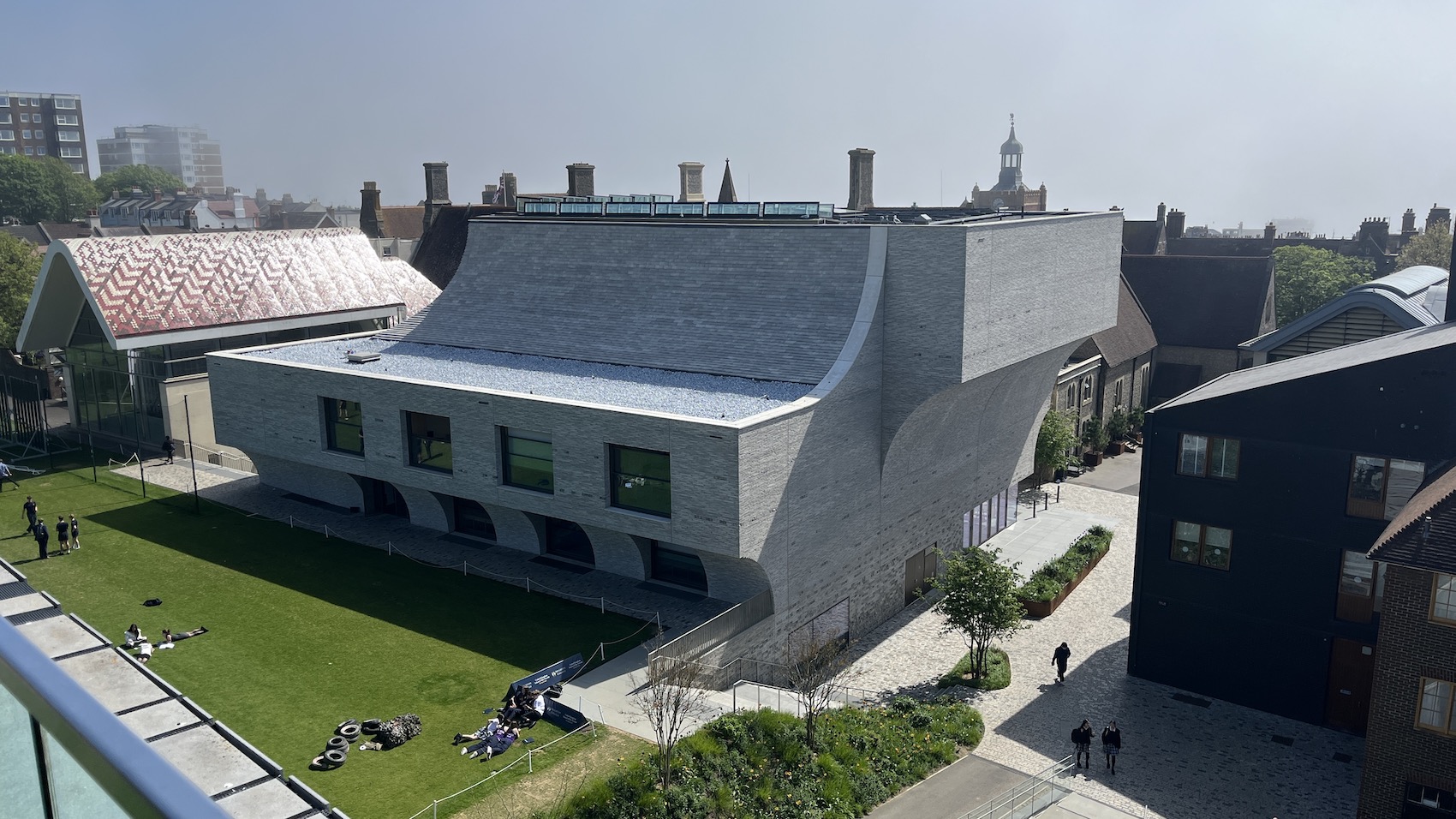Simon Walker, Category Manager at SIG Zinc & Copper, explores best practice for incorporating rooflights into standing seam zinc roofs with Architecture Today’s Technical Editor John Ramshaw.
In association with![]()
Rooflights are a common feature on standing seam roofs, and if properly designed and detailed, can significantly improve daylighting – without compromising building performance or aesthetics. So how should architects approach this important aspect of roof specification, and what details can they use to ensure technical excellence and fitness for purpose? Simon Walker, Category Manager at SIG Zinc & Copper, in conversation with Architecture Today’s Technical Editor John Ramshaw, answers these questions and more.
What key design aspects should architects consider when incorporating rooflights into standing seam zinc roofs?
The main questions to ask are about the roof pitch, width and depth limitations. If we start with roof pitch, the main challenge is water ingress in the seams. This becomes more likely on lower pitches, typically between three and 14 degrees, due to capillary action. In general, rooflights act as an obstacle so the steeper the roof the better chance it has of draining rainwater effectively. Specifers should also remember that the absolute minimum pitch for any zinc roof is three degrees.
Rooflights with welted detailing at Volk’s Electric Railway in Brighton
In terms of rooflight width, it is not advisable to ‘break’ more than three seams, as this makes diverting rainwater around the unit problematic. Letting water run over the face of the rooflight is poor practice.
Depth limitations relate to the use of flush rooflights or sunken rooflights as they are sometimes known. This type of installation will require a gulley around the back and sides to divert water away. Naturally, the gulley must be set within the depth of the roof, which may involve altering the insulation, ventilation strategy, and even the roof structure – all of which can add cost.
SIG Zinc & Copper supplies a wide range of zinc roofing from leading manufacturers, including VMZINC and elZinc, alongside copper alloy, stainless steel and aluminium. As such we can offer expert and unbiased advice across a range of different products and systems. We recommend early engagement with our design and specification teams so that the right decisions are made from the outset.
Rooflight on a low-pitch zinc roof with soldered seams
You mentioned capillary action on low-pitch installations, are there any specific details that can help with this?
Soldered joints should be used on lower pitched roofs (below 14 degrees) in place of traditional welted ones to keep water out. For example, VMZINC produces a welted detail (VMZ-SN-MA-RA-b4) for rooflights installed above 14 degrees, and soldered detail (VMZ-SN-MA-RA-b1) for rooflights installed between three and 14 degrees. The manufacturer also produces variations of these for different roof build-ups, which can be downloaded in dwg format from the Technical Drawings section of its website. Always use the approved details of the manufacturer whose material you are using.
VMZINC soldered detail for zinc standing seam rooflights – suitable for 3-14º pitch
What about rooflight positioning and detailing around the head?
VMZINC stipulates that rooflights should be positioned with at least 250mm between the sides of the unit and the next standing seam. At the head of the rooflight, the zinc roofing should end 300mm short with a continuously soldered double welt fixed with a soldered cleat to a flat zinc back panel. Behind the overlap, between the roofing and back panel, is a hem where the zinc is folded over to create a gap between the sheets of metal. The welted detail is designed to permit thermal movement, while also reducing the risk of capillary action. Finally, a deflector made from soldered zinc is positioned behind the head of the rooflight to direct water around the sides for ease of drainage.
VMZINC welted detail for zinc standing seam rooflights – suitable above 14º pitch
Is the head detail the same for low-pitch installations?
No. For roofs below 14 degrees the last 300mm of zinc standing seam is soldered together rather than welted. This creates a ‘gutter’ around the rooflight to aid drainage and eliminate capillary action. Unfortunately, solder does not allow for movement which can be problematic if wider rooflights are required.
What is the minimum height for rooflight upstands and how should they be detailed?
Upstand heights should not be lower than 80mm between the finished roof surface and the top of the rooflight. The VMZINC installation guide also recommends a 10mm expansion gap between the base of the zinc and where it meets the timber upstand. Rather than forcing the zinc panel into the upstand, this slight angle allows for some thermal movement. Behind the rooflight flashing at the top of the zinc there should be another hem – also known as a water check – which provides protection from wind driven rain.
Contact Details
For more information, please visit the SIG Zinc & Copper website.


















